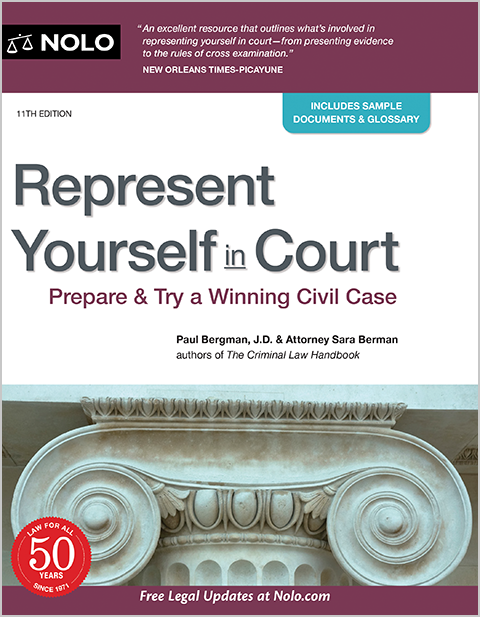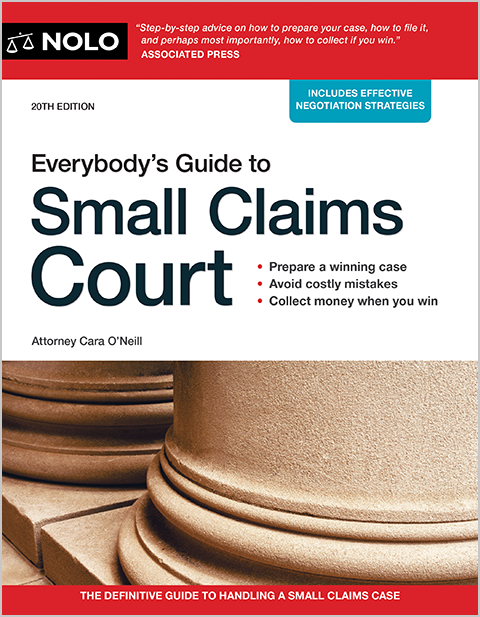You got a Missouri money judgment. Now it's time to collect. We explain how to record Missouri judgment liens, collect on a lien, extend your judgment, and more.
You went to court and got a judgment that says you're entitled to money from the party you sued, now called a "judgment debtor." What comes next? How can you—the judgment creditor—collect the money you're due? That's the focus of this article.
One way to collect is by putting judgment liens on the judgment debtor's Missouri property. After a quick review of how judgment liens differ from judgments, we'll turn our attention to the specifics of Missouri law. In particular, we cover:
- the kinds of property subject to Missouri judgment liens
- how you put judgment liens on Missouri property
- how long your judgment lien lasts and how you can extend it, and
- the ways you can turn your judgment lien into money.
If you want some background information, here's more about how court judgments are collected.
What's the Difference Between a Judgment and a Judgment Lien?
A judgment is a court order that says a judgment creditor is legally entitled to a sum of money from a judgment debtor. But a judgment, standing alone, isn't self-enforcing. That is, you can't take a judgment to your county sheriff's office and demand that the judgment debtor's real estate be sold to pay you.
If you want to seize and sell the judgment debtor's property, you first have to attach your judgment to specific items of property. That's what a judgment lien does. As we'll see below, once you take the correct steps to record your judgment, it becomes a lien against the judgment debtor's property. At that point, you can look for ways to turn your judgment into cold, hard cash.
Kinds of Property Subject to Missouri Judgment Liens
In Missouri, you can attach judgment liens only to real estate, meaning land, buildings, and other improvements. When you properly record a Missouri judgment lien (see below), it attaches to real estate the judgment debtor:
- presently owns, and
- acquires later, as long as your judgment lien is still good.
No Liens on Personal Property
You can't put judgment liens on Missouri personal property—cars, artwork, antiques, electronics, household furnishings, and the like. But that doesn't mean a judgment debtor always gets to keep their autos, boats, and other big ticket items. Even without judgment liens, there's a way to have the sheriff seize personal property.
If you're considering this step, speak to a Missouri collection lawyer first. They can tell you whether it's worth your time and expense to go after the judgment debtor's personal property—and there's a good chance it won't be. If it's likely to be worthwhile, they'll guide you through the process.
Missouri Exemptions
Like all states, Missouri exempts some property—both real and personal—from the reach of creditors. A few examples include:
- up to $15,000 worth of real estate used as a home
- a maximum of $3,000 in motor vehicles
- as much as $3,000 worth of household goods, furnishings, clothing, books, and other items used primarily for personal, family, or household purposes, and
- up to $3,000 worth of professional books, implements, or tools of the trade.
How to Attach Judgment Liens to Real Estate
In Missouri, real estate judgment liens are created at the county level. If you want a lien against real estate in Jackson County, for example, you must get a Jackson County judgment lien. Getting a lien isn't difficult, but the steps you have to follow depend on:
- what court entered your judgment, and
- where you want a judgment lien.
You Want a Lien in the County Where Judgment Was Entered
When the court that issued your judgment is situated in the same county where you want a judgment lien, the process depends on which court awarded your judgment.
Missouri Circuit Courts
You probably got a judgment in the Missouri Circuit Court—the state's main trial court. If so, don't need to do anything to get a judgment lien in the county where the court is situated. A lien is created automatically, when the court enters judgment for you.
Different Rules for Associate Division and Other Courts
The associate division of the Missouri Circuit Court is a court of limited jurisdiction, meaning it can only hear civil (non-criminal) cases involving disputes of $25,000 or less. Judgments of the associate division don't automatically create judgment liens.
The same is true for judgments entered by a federal court in Missouri, the Missouri Supreme Court, and the Missouri Court of Appeals.
To get a lien based on a judgment from one of these courts, you must ask the clerk of the court that issued the judgment for a transcript (an official summary) of it. Take the transcript to the clerk of the county's circuit court, and ask them to record it in the court's judgment docket. Once the transcript is recorded, it becomes a judgment lien.
No Judgment Lien for Small Claims or Municipal Judgments
Judgments entered by the small claims or municipal divisions of the Missouri Circuit Court don't create judgment liens. To collect on a small claims or municipal judgment, you must apply to the clerk of the court for a writ of execution—an order to seize and sell the judgment debtor's property—then deliver the writ to the sheriff for execution.
A Missouri collections attorney can provide details.
You Want a Lien in a Different County
To get a judgment lien in a different county than the county where your judgment was entered, go to the court clerk's office for the court that entered your judgment. Ask them for a judgment transcript. You'll need a transcript for every county where the judgment debtor owns real estate and you want a judgment lien.
Take a copy of the transcript to the circuit court clerk's office in each county where you want a lien and ask them to record it in the judgment docket. Once it's recorded, you've got a judgment lien in that county.
How Long Does Your Missouri Judgment Last?
A Missouri judgment is good for 10 years from the later of the date:
- it's entered by the court
- you revive it (see below), or
- the judgment debtor makes a payment of record on it.
Once 10 years have passed without the judgment being revived or the debtor making a payment of record, Missouri law conclusively presumes that the judgment has been satisfied. In other words, your judgment is dead and you can't revive it.
A judgment lien is effective on the date:
- judgment is entered by the court, for circuit court judgments entered in the same county where you want a lien
- a transcript of the judgment is recorded in the circuit court, for judgments entered by any other court in the county, or
- a transcript of the judgment is recorded in the circuit court, for judgments entered by any court outside the county.
The lien continues in force for 10 years.
Reviving Your Judgment
Missouri law lets you revive your judgment and judgment liens for successive 10-year periods. Here's how it works.
Before the judgment expires, file a motion in the court that originally entered it, asking that it be revived. In response, the court will issue an "order to show cause" to the judgment debtor. That's an order directing the judgment debtor to appear in court and explain why the judgment should not be revived. You must serve the judgment debtor with that order.
The judgment debtor has to convince the court that they have a viable defense to your motion. As long as you file in time and your judgment hasn't already been satisfied, that'll be a tough hill for the judgment debtor to climb.
Think about hiring an experienced local collection lawyer to file your motion to revive. This is someone who knows the law, what you need to prove, and how to head off any potential defenses. If your judgment is worth reviving, it's worth having qualified legal representation handle it.
How Do You Turn a Missouri Judgment Lien Into Money?
In general, there are three ways you can try to collect on a Missouri judgment lien:
- negotiate a settlement
- wait for the judgment debtor to sell or refinance the property, and
- execute on your lien.
Negotiate a Settlement
If you want payment sooner rather than later, this is likely your best choice. No, you won't get all money you're entitled to, but that's the nature of a settlement. You'll collect faster—and more inexpensively—than via the other two options.
Wait for the Judgment Debtor to Sell or Refinance
Most often, a buyer or lender will insist on clear title, free of all judgment liens. So, to sell or refinance, the judgment debtor will have to approach you to make a deal. Only now, you've probably got more negotiating leverage. As long as you're willing to sit tight and wait, this too is a low-cost, low-stress way to collect.
Execute on Your Lien
Executing on your lien means having the sheriff sell the judgment debtor's property at auction. This might seem like a tempting option. But before you head down this path, check with a local attorney to find out about the legwork and costs involved. In addition, see who's ahead of you in payment priority, or you might discover—too late—that the sale proceeds aren't enough to pay you in full (or at all).
Lastly, be aware that this step might be just the push the judgment debtor needs to declare bankruptcy. Should that happen, you're likely to be standing in a long, very unhappy line of creditors with little chance of getting paid.
Next Steps
Want to have a look at Missouri's judgment lien laws? You'll find them at Mo. Rev. Stat. §§ 511.350 to 511.480, 513.430, 513.440, and 513.475, together with Mo. R. Civ. Proc. 74.08, 74.09, and 74.13 (2025).
We've covered the basics, but of course, the devil's in the details. After reviewing Missouri's statutes and court rules, you might decide that your best option is to get help collecting your judgment. An experienced Missouri creditor's rights or collection attorney can answer your questions and help you chart a collection path that gives you the best chance to maximize your recovery.



